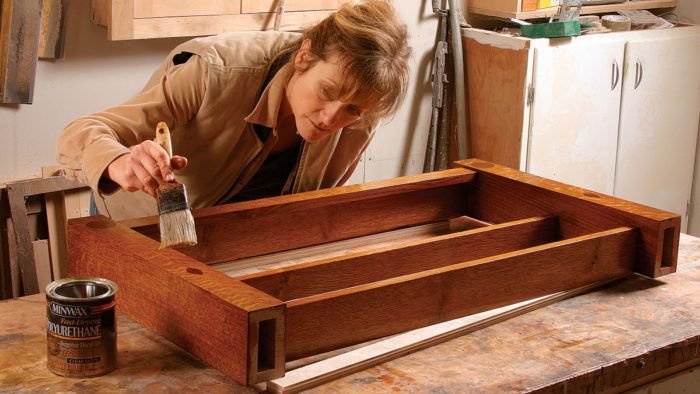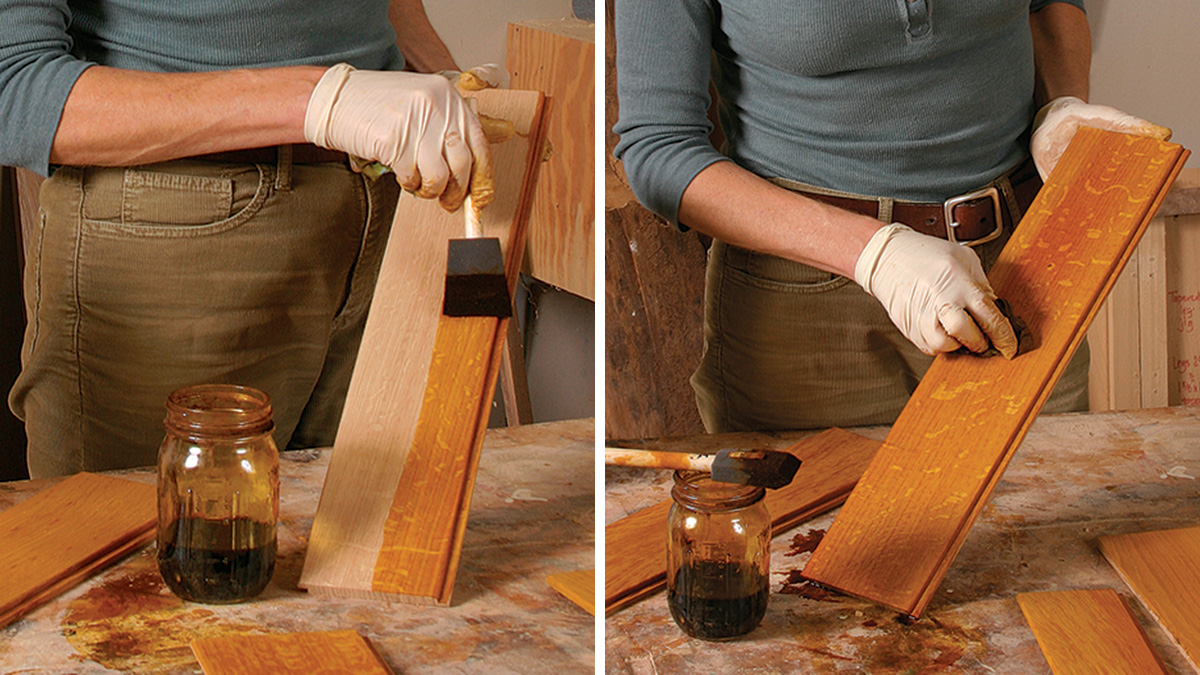Five Steps to an Arts and Crafts Finish
Furnituremaker and Arts-and-Crafts scholar Nancy Hiller reveals her secrets to achieving an aged look.

Synopsis: This companion piece to Nancy Hiller’s Arts and Craft Wall Shelf shows how to apply an original Arts and Crafts finish. Hiller uses a five-step process that incorporates techniques from other well-known finishers. First she dyes the oak with a water-based dye, then adds a oil-based stain to bring out the figure. A coat of amber shellac seals the piece, followed by gel stain added to parts of the piece to simulate an aged look. Add a topcoat and the process is complete.
Whenever clients want cabinets to look original to a late-19th- or early-20th-century-style home, I use this finish. I have borrowed techniques from two well-known finishers to create a period look. While the five steps to this Arts and Crafts finish may seem daunting, the execution is actually quite painless.
Dye and stain increase color and contrast
Before applying any finish, sand all parts to P180-grit, then use water to raise the grain and gently sand again with P180-grit.
Jeff Jewitt introduced me to using dyes under oil-based stains to bring out the contrast between the basic grain and the rayfleck patterns of quartersawn oak.
First, dye the oak with a water-based dye solution (I use TransTint’s honey amber, dissolved in water at the ratio of 1 oz. to 1 qt.), applying it quickly and liberally with a foam brush and wiping off the excess with a lint-free cloth. During this step and the next (depending on the woods used), it may be necessary to block out and/or stain the inlay to maintain contrast. In this case, I carefully placed a sealer coat of clear shellac over the inlay after it had been glued in place and sanded, but before applying the amber dye. To knock back any raised grain, lightly sand with P320-grit paper.

Next, use an oil-based stain (in this case, Minwax’s Early American) to bring out the wood’s full figure. Apply the stain generously using a foam brush and leave it on for 5 to 10 minutes. Wipe off any excess stain using a clean, lint-free cloth and allow the piece to dry overnight. Make sure to check periodically for stain weeping out of the oak’s open pores, removing any you find.
Seal in the previous steps with shellac
A professional floor finisher once advised me that I could get an old look on pine floors by adding amber shellac. So once the stain has dried, I brush on a thin coat of Zinsser’s premixed amber shellac to achieve a look similar to the shellac-based varnish that was used in many older houses. The shellac also seals the piece before the aging steps. When the shellac has dried, scuff-sand with P320-grit paper and wipe off the dust with a tack cloth. Now you can judge the final tone of the finish and fill any holes with matching wood putty. Scuff-sand again.

From Fine Woodworking #193
To view the entire article, please click the View PDF button below.
Fine Woodworking Recommended Products

Waterlox Original


Odie's Oil









Log in or create an account to post a comment.
Sign up Log in